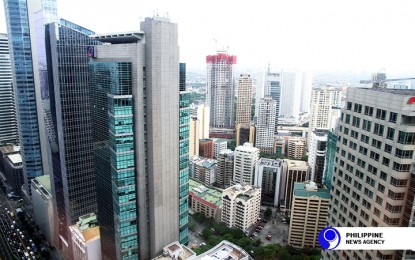
DRIVING THE ECONOMY. Expectations for further easing of domestic inflation rate, better output of the tourism sector and higher infrastructure spending are expected to drive the domestic economy faster in the second half of 2023. Despite this, the local currency is seen to be in a weakening mode against the US dollar due to expectations for another 25 basis points increase in the Federal Reserve's key rates. (PNA file photo)
MANILA – Increased infrastructure investments, sustained tourism-related revenge spending and projected further slowdown of inflation rate are expected to boost domestic economic growth in the second half of 2023, with the full-year output seen above 6 percent.
According to the May 2023 issue of The Market Call, the monthly joint publication of First Metro Investment Corporation (FMIC) and University of Asia and the Pacific (UA&P), “the economy should rebound in H2 (second half) as inflation continues to ease to average 3.3 percent in Q4 (fourth quarter).”
The report said the country’s gross domestic product (GDP) for the second half of the year is expected to be more robust, driven by the services sub-sectors such as transport and storage and accommodations and food services due largely to the continued recovery of the tourism sector.
Also, infrastructure projects of both the public and the private sectors are seen to be accelerated during the dry season, and this can boost investments and employment, among others, it said.
“Thus, despite the risks and challenges, the country’s economic outlook remains solid as it stays on track to meet the government’s 6-7 percent growth target for the year.” it added.
However, the report said the GDP is expected to slow by around 0.5 percent in the second quarter of the year from the previous three month’s 6.4 percent expansion due to the impact of higher inflation rate on consumer’s purchasing power.
While growth decelerated in the first three months this year, this is the highest among the 10-member Association of Southeast Asian Nations (ASEAN) for the quarter, it said.
It added that although GDP registered a lower seasonally adjusted print in the first quarter of this year, at 1.1 percent from 1.7 percent same period last year, “the downward trend will likely bottom in Q2 (second quarter) as inflation eases and more employment and the income tax cut boost consumption spending.”
Inflation averaged at 7.9 percent in the first four months this year, way above the government’s 2 to 4 percent target band.
However, the monthly level has slowed to 6.6 percent last April after hitting a 14-year high of 8.7 percent last January.
Meanwhile, the report said the peso is expected to remain challenged as the country’s trade deficit widens, along with the impact of the possibility of another 25 basis points increase in the Federal Reserve’s key rates in June.
To date, the local currency is trading at 55-level against the US dollar.
“The peso will remain in depreciation mode especially weighed down by large trade deficits and BSP (Bangko Sentral ng Pilipinas) not going in step with the Fed (Federal Reserve) in the latter’s rate hikes, which we still expect in June,” it said.
BSP’s policymaking Monetary Board (MB) decided to keep the central bank’s key rates steady during its rate setting meeting last week, a change since the rate hiking cycle started in May 2022, after monetary authorities noted the deceleration of the domestic inflation rate.
The BSP’s key rates have been increased by a total of 425 basis points from the record low of 2 percent in 2020.
“BSP has kept policy rates unchanged at 6.25 percent in its May 18 meeting, and we think it will have ended its policy rate hiking cycle, unless a major spike in inflation occurs or the exchange rate again rises too fast. Besides, BSP Governor (Felipe) Medalla has stated that BSP may even reduce reserve requirements probably late in the year if inflation does fall within the revised targets,” the report added. (PNA)
